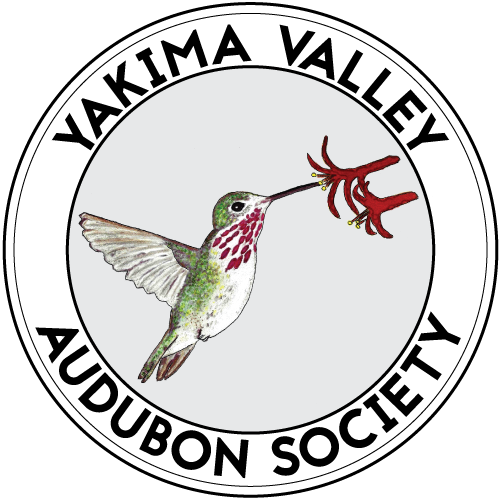Conservation -- How Each of Us Can Help Birds and Wildlife
General ·Audubon Washington reports that birds (and other wildlife) here in Washington face mounting pressure from habitat loss and changing climate. In 2019, back-to-back reports from the Cornell Lab of Ornithology and the National Audubon Society found that not only has the continent lost an estimated three billion birds since the 1970’s, but that two-thirds of North American avian species face extinction under the worst climate change projections. Audubon Washington and many other organizations are working to protect our birds despite these daunting challenges. Many major new initiatives are proposed and are being implemented.
But What Can Each of Us Do individually to Benefit Birds and Wildlife?
It’s important to know that we can each take actions that will collectively make a difference and benefit our birds and wildlife. I found some inspiration for individual actions that we can take from reading the American Bird Conservancy’s (ABC) Winter 2021-2022 issue of Bird Conservation, and from perusing Audubon Washington’s website.
Don’t Clean Up That Lawn!
Most Americans, especially we guys, spend way too much time and effort on yard cleanup. We trim, and edge, and spray pesticides and herbicides and fertilizers, rake leaves, and we create neat, but sterile yards with little to feed or support our local birds. Being a little less zealous with our yard cleanups can benefit our birds - even without offending our neighbors. An article in ABC’s Winter 2021-2022 Bird Conservation reports that undisturbed wildflower stalks, grasses, leaf litter, and other ‘dead’ vegetation provide resting places for overwintering invertebrates and their eggs, which provide winter, spring, and summer bird food. Entomologist Douglas W. Tallamy writes: “…any portion of your landscape that is not regularly trammeled by feet and lawnmower wheels will quickly develop a thick O horizon, a soil layer with a high percentage of loose organic matter…perfect for pupating lepidoptera, as long as you don’t rake away that black gold each year during your spring and fall cleanups.” Birds like Fox Sparrows, Varied Thrushes, Hermit Thrushes, robins, and other ground-feeding birds, will thank you for your ‘lack of diligence’ with your lawns. Don’t feel guilty…you’re benefiting birds and wildlife.
Plant Oaks, and Other Native Species, In Your Yard
Another article in ABC’s Winter 2021-2022 Bird Conservation encourages us to plant “The Mighty White Oak”. The article focuses on the eastern White Oak, a long-lived species that plays an out-sized role in supporting birds and other wildlife. Douglas W. Tallamy, in his book Nature’s Best Hope, states that “(c)aterpillars are the mainstay of most bird diets in North America, particularly when birds are rearing their young.” Tallamy and his colleague, Kimberly Shropshire, documented that across the U.S., oaks host the greatest caterpillar diversity: at least 934 caterpillar species were supported by oaks…. A single large oak tree can host thousands of individual caterpillars. Oak acorns are also good wildlife food and the holes and crevices in the oak trees provide breeding and shelter sites for cavity-nesting birds and wildlife.
Plant our local Oak tree species in your yard: Oregon White Oak (Quercus garryana), which grows naturally just to the west of Yakima in a zone below the Ponderosa Pine forest. This drought-tolerant native tree will thrive in your yard with minimal watering, and will provide food and shelter for birds, and shade for your yard, for many years to come.
Tips to Create Bird-friendly Communities
Both Audubon Washington and the National Audubon Society have information about the many ways we can individually and collectively create bird-friendly communities, including information about bird-friendly native plant species. Click on the above links to their webpages for ideas you can use at your home, and that we can use in our community, to benefit birds.
-Stan Isley
